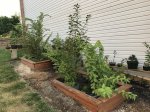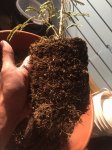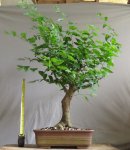markyscott
Imperial Masterpiece
Wow thank you everyone for your great replies.
I think I was skipping that whole colander phase just because I was getting ahead of myself and forgot.
I will search for a proper soil testing kit. I might use the one suggested.
I don't have as much room as I would like I have along my northern fence.
I plan on putting in as many trees as will fit without crowding them ( I have a decent supply of trees I can take cutttings from, or airlayer)
And thanks again for all the sources. I have a lot to read.
I see no value whatever in sinking a colander in the ground for deciduous trees unless you're interested in preventing the roots from running and causing them to encircle the trunk. The former will limit nebari development and the latter will encourage flaws that will take years to correct. With all respect owed to Anthony, one thing I've learned on this forum is to ask for results before you accept 3rd-hand advice. I'm sure his suggestion was offered in the best possible way, but what do the Welshman's trees look like? Do they represent something you are hoping to achieve?
Scott








